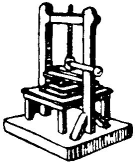Transcriber's Notes: Variations in spelling and hyphenation have beenleft as in the original. Ellipses match the original.
A few typographical errors have been corrected. A complete list aswell as other notes follows the text.
For full functionality of this file, download the html version.
THE RISE OF THE
MEDIAEVAL CHURCH
AND ITS INFLUENCE ON THE CIVILISATION OF
WESTERN EUROPE FROM THE FIRST TO THE
THIRTEENTH CENTURY

BURT FRANKLIN
New York, N. Y.
TO
HENRY C. LEA
Who through his numerous scholarly monographs has earned the foremost
place among American Church historians, both at home and abroad,
AND TO
PROFESSOR DOCTOR ADOLPH HARNACK
To whom both the Old and the New World are profoundly indebted for his
scholarly labours, and from whose inspiration in public lectures and
private conferences this work derived much that is best in it,
This Book is Gratefully Dedicated.
PREFACE
The educational value of any subject depends primarily upon its ownintrinsic value. The teaching of Church history for ten years as aregular course in liberal arts, side by side with the "orthodox" coursesin history, has demonstrated beyond question that this subject can bemade at once very popular and very valuable. It has proved its right toexist as a cultural subject. Yet the lack of intelligent information,even among educated people, concerning the history of the ChristianChurch, both in early and modern days, is simply appalling.
The comparatively recent revival of interest in Church history has givenbirth to many general Church histories from English and Americanscholars. Numerous translations of discriminating and painstaking Germanauthors are also available. A large number of intensive monographs haslikewise appeared. But all these texts are written for classes intheological schools. Not a single Church history suitable either forregular college work, or for popular reading, is available; and yet allthe standard courses in history are provided with up-to-date texts andillustrative material.
This work is intended to meet the need I have felt in my own classes,and have heard expressed from fellow teachers and laymen, for a simpleaccount of [vi]the evolution of the old Church minus all theological anddogmatic discussions. The purpose has been to show the origin of theChristian Church, its development in organisation, the forces whichproduced the Papacy, and the marvellous, formative influence of theRoman Church upon the civilisation of Western Europe. To that end theprincipal lines of development are emphasised at ever